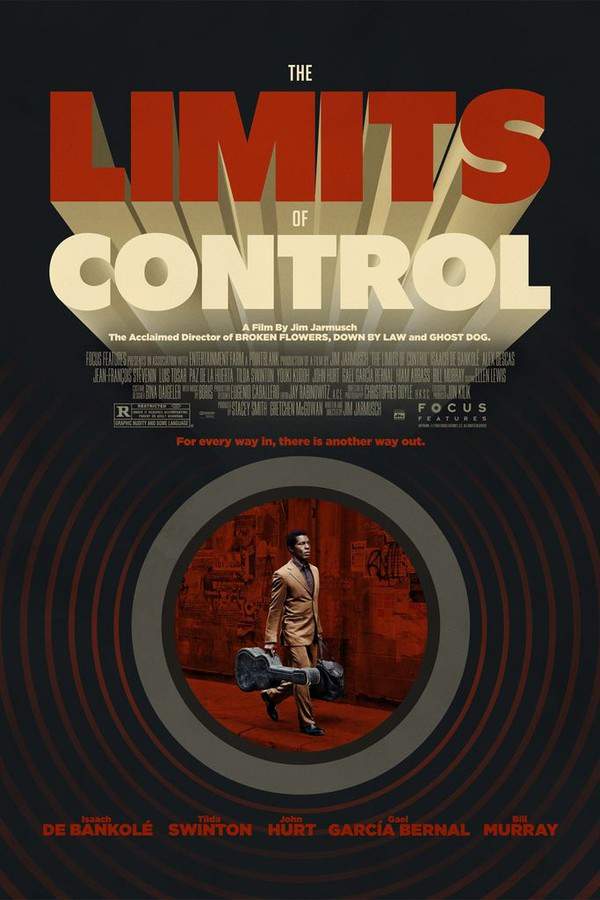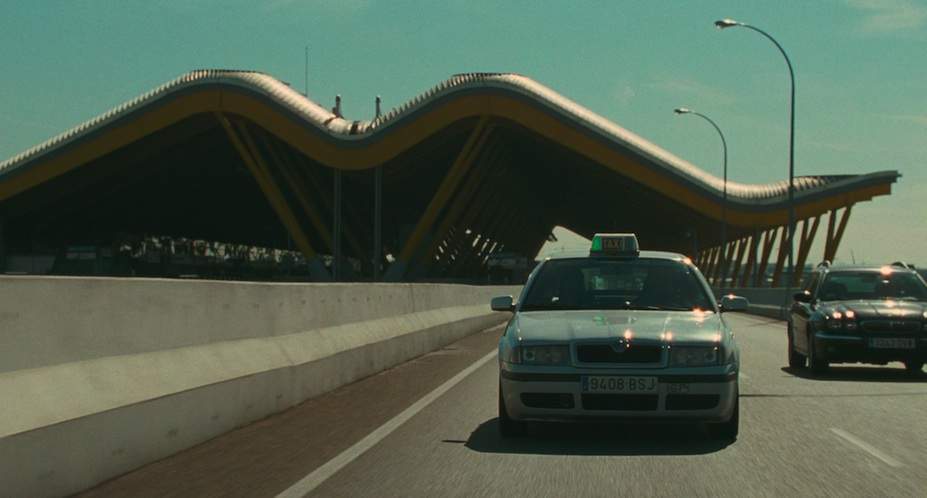The Limits of Control 2009

A mysterious outsider travels through Spain, following a series of cryptic instructions and encountering enigmatic figures. He appears driven by a specific, unspoken objective, leading him on a tense and unsettling journey. As he progresses, the lines between his mission and his own internal state become increasingly blurred, presenting a compelling exploration of obsession and the nature of reality.
Does The Limits of Control have end credit scenes?
No!
The Limits of Control does not have end credit scenes. You can leave when the credits roll.
Meet the Full Cast and Actors of The Limits of Control
Explore the complete cast of The Limits of Control, including both lead and supporting actors. Learn who plays each character, discover their past roles and achievements, and find out what makes this ensemble cast stand out in the world of film and television.
External Links and Streaming Options
Discover where to watch The Limits of Control online, including streaming platforms, rental options, and official sources. Compare reviews, ratings, and in-depth movie information across sites like IMDb, TMDb, Wikipedia or Rotten Tomatoes.
Ratings and Reviews for The Limits of Control
See how The Limits of Control is rated across major platforms like IMDb, Metacritic, and TMDb. Compare audience scores and critic reviews to understand where The Limits of Control stands among top-rated movies in its genre.

41
Metascore
6.4
User Score


43%
TOMATOMETER

43%
User Score

6.2 /10
IMDb Rating

60
%
User Score
Take the Ultimate The Limits of Control Movie Quiz
Challenge your knowledge of The Limits of Control with this fun and interactive movie quiz. Test yourself on key plot points, iconic characters, hidden details, and memorable moments to see how well you really know the film.
The Limits of Control Quiz: Test your knowledge on the mysterious journey of Lone Man in 'The Limits of Control'.
What does Lone Man receive at the airport?
A cryptic briefing
A map
A ticket
A suitcase
Show hint
Full Plot Summary and Ending Explained for The Limits of Control
Read the complete plot summary of The Limits of Control, including all major events, twists, and the full ending explained in detail. Explore key characters, themes, hidden meanings, and everything you need to understand the story from beginning to end.
In a bustling airport, a figure known as Lone Man (Isaach De Bankolé) receives an obscure briefing from Creole (Alex Descas), whose puzzling words create an atmosphere of intrigue for a mission that is cloaked in secrecy. Upon leaving the airport, Lone Man embarks on a twisted journey that transports him from Madrid to Seville, characterized by serendipitous encounters with various individuals in cafés and on trains.
The pattern of these interactions is both striking and theatrical: every meeting begins with Lone Man ordering two espressos in a café, shortly before his contact arrives. In a ritualistic exchange, the stranger invariably asks, > “You don’t speak Spanish, right?” — a line that is delivered with slight variations in each encounter. As these individuals unfold their unique inclinations—whether discussing molecular details or sharing their artistic crafts—they engage in a curious trade of matchboxes containing coded messages inscribed on slips of paper. Lone Man eagerly consumes these notes, which function as crucial guides for his subsequent rendezvous.
During his travels, he crosses paths with a captivating woman (Paz de la Huerta), whose appearances are defined by her boldness regarding nudity and transparency. She extends an invitation for physical intimacy, yet Lone Man declines, adhering to his moral compass. This motif is echoed by Creole’s haunting wisdom: > “He who thinks he is bigger than the rest must go to the cemetery. There he will see what life really is: a handful of dirt.” This phrase reverberates throughout the film, resonating with the existential themes present in a flamenco song that drifts through a Seville nightclub, its poignant melody highlighting the ephemeral nature of human connections.
As the sun-drenched terrain of Almería transitions into the rugged landscape of the Tabernas desert, Lone Man embarks on a surprising adventure. A weathered pickup truck, bearing the enigmatic slogan “La vida no vale nada”, transports him across the barren expanse, driven by an enigmatic Mexican companion (Gael García Bernal). The desolate environment leads to a heavily fortified compound, veiled in secrecy and meticulously protected. However, undeterred, our protagonist utilizes his exceptional ingenuity to infiltrate the area, subtly sliding into the target’s office with meticulous stealth.
Here, he confronts his target, played by the enigmatic Bill Murray, who inquires about the intruder’s method of infiltration. The response is characteristically unconventional: “I used my imagination.” With his task now accomplished and the guitar string silenced, Lone Man rides back to Madrid on horseback, shedding the tattered suit that has accompanied him throughout his journey. In its place, he dons a sweat-stained tracksuit emblazoned with the proud emblem of Cameroon—a bold statement of rebirth and transformation.
As he emerges from the train station onto the lively street, he discards one last vestige of his former self: the final matchbox, a fleeting symbol of transience and the fragility inherent in human existence.
Uncover the Details: Timeline, Characters, Themes, and Beyond!

Coming soon on iOS and Android
The Plot Explained Mobile App
From blockbusters to hidden gems — dive into movie stories anytime, anywhere. Save your favorites, discover plots faster, and never miss a twist again.
Sign up to be the first to know when we launch. Your email stays private — always.
Watch Trailers, Clips & Behind-the-Scenes for The Limits of Control
Watch official trailers, exclusive clips, cast interviews, and behind-the-scenes footage from The Limits of Control. Dive deeper into the making of the film, its standout moments, and key production insights.
Cars Featured in The Limits of Control
Explore all cars featured in The Limits of Control, including their makes, models, scenes they appear in, and their significance to the plot. A must-read for car enthusiasts and movie buffs alike.
The Limits of Control Themes and Keywords
Discover the central themes, ideas, and keywords that define the movie’s story, tone, and message. Analyze the film’s deeper meanings, genre influences, and recurring concepts.
The Limits of Control Other Names and Titles
Explore the various alternative titles, translations, and other names used for The Limits of Control across different regions and languages. Understand how the film is marketed and recognized worldwide.
Similar Movies To The Limits of Control You Should Know About
Browse a curated list of movies similar in genre, tone, characters, or story structure. Discover new titles like the one you're watching, perfect for fans of related plots, vibes, or cinematic styles.
Quick Links: Summary, Cast, Ratings, More

What's After the Movie?
Not sure whether to stay after the credits? Find out!
Explore Our Movie Platform
New Movie Releases (2025)
Famous Movie Actors
Top Film Production Studios
Movie Plot Summaries & Endings
Major Movie Awards & Winners
Best Concert Films & Music Documentaries
Movie Collections and Curated Lists
© 2025 What's After the Movie. All rights reserved.











































